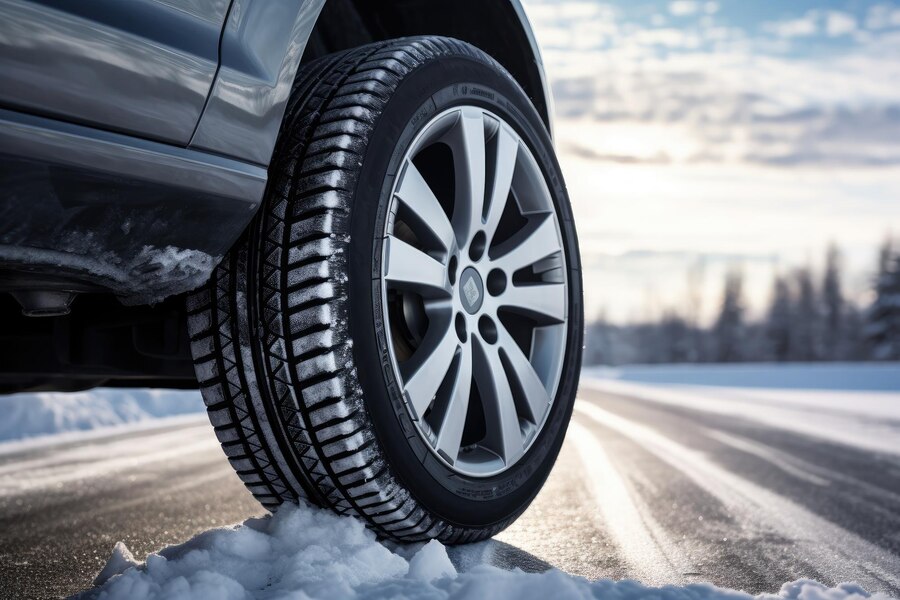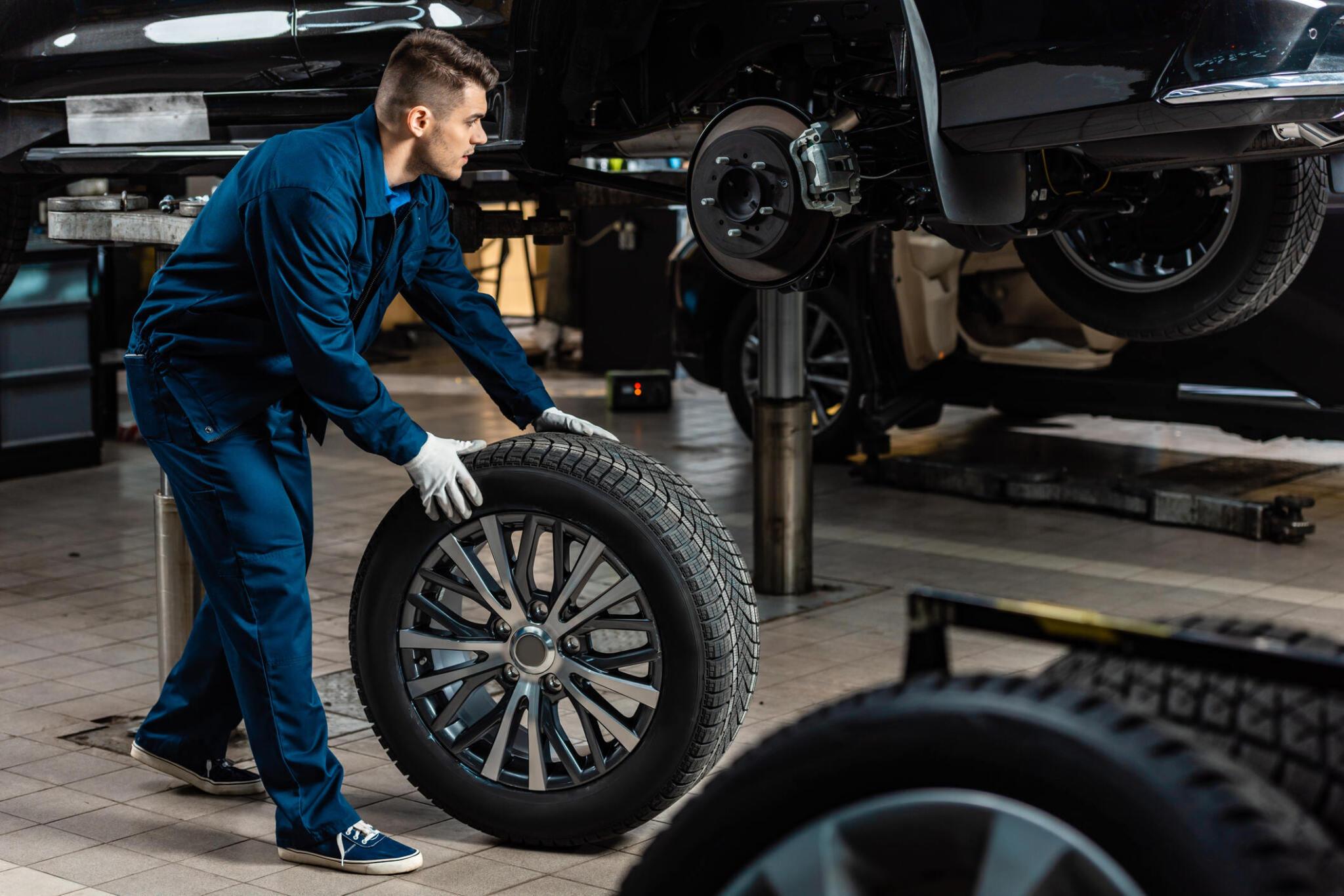Last Updated on April 21, 2024
Discover the Benefits of Low Rolling Resistance Tires for Improved Gas Mileage
Have you heard? There’s a new breed of tire in town. The Low Rolling Resistance tires (LRR) are designed to provide better gas mileage. For the driver, that means lower fuel costs. For the environment, that means decreased pollution from automobile emissions. For the automobile manufacturers, that means a step toward meeting government standards for reduced vehicle fuel consumption.
What is rolling resistance?
It takes energy to roll a tire. It takes even more energy when your three or 4-thousand-pound car sits on top of that tire. Rolling resistance measures how much energy it takes to push your tires down the road.
What makes Low Rolling Resistance Tires (LRR) different?
The idea was to create tires that can move forward with less energy but still be safe to drive. Engineers already knew that worn-out bald tires take less energy to roll because they don’t have all that tread on the road. Of course, those worn-out tires are dangerous for the same reason: insufficient tread. The trick was to create a tire with reduced rolling resistance that would still handle well and be safe on the road.
Today’s low rolling-resistance tires do just that. They are made with new tire compounds and modern tread patterns that respond well on the road and meet all NHTSA safety standards.
Boost Fuel Efficiency and Savings
In today’s world of rising fuel costs and increased environmental awareness, finding ways to improve your vehicle’s fuel efficiency is a top priority for many drivers. One effective solution that has gained popularity is using low-rolling resistance tires. These specialized tires offer numerous benefits, including improved gas mileage, reduced emissions, and long-term cost savings. In this comprehensive guide, we’ll delve into the world of low-rolling-resistance tires, exploring how they work, their advantages, and why they’re worth considering for your vehicle.

Understanding Rolling Resistance
Before we dive into the benefits of low-rolling-resistance tires, let’s first understand what rolling resistance is. Rolling resistance is the force that opposes the motion of your tires as they move along the road. The deformation of the tire primarily causes this resistance as it makes contact with the road surface. Overcoming rolling resistance requires your vehicle’s engine to work harder, which, in turn, leads to increased fuel consumption.
How Do Low Rolling Resistance Tires Work?
Low rolling resistance tires are specially designed to reduce the energy lost to rolling resistance. They achieve this through a combination of innovative tire technology and advanced materials. Here’s how they work:
- Tread Design: Low-rolling resistance tires typically feature a unique tread pattern designed to minimize the deformation of the tire as it rolls. This reduces the energy lost to heat and friction, allowing smoother and more efficient movement.
- Specialized Compounds: These tires often use specialized rubber compounds with lower hysteresis, which generate less heat during flexing. This property reduces energy loss and improves fuel efficiency.
- Lighter Construction: Many low-rolling resistance tires are constructed with lightweight materials, such as more golden steel belts and thinner sidewalls. This reduces the overall weight of the tire, which, in turn, requires less energy to roll.
The Advantages of Low Rolling Resistance Tires
Now that we’ve covered how these tires work, let’s explore their key advantages:
- Improved Fuel Efficiency: The most significant benefit of low rolling resistance tires is their ability to boost your vehicle’s fuel efficiency. By reducing the energy needed to overcome rolling resistance, these tires can improve gas mileage by up to 5% or more. Over time, this can result in significant cost savings at the pump.
- Reduced Emissions: Less fuel consumption means fewer greenhouse gas emissions. Low rolling resistance tires are eco-friendly, helping reduce your carbon footprint and creating a cleaner environment.
- Extended Tire Lifespan: While these tires may not necessarily last longer in terms of mileage, their design can lead to less wear and tear on other vehicle components, such as brakes and suspension. This can indirectly contribute to a longer overall vehicle lifespan.
- Smooth and Comfortable Ride: Tire technology advancements have allowed manufacturers to balance fuel efficiency and ride comfort. Many low-rolling resistance tires offer a quiet and comfortable driving experience.
How much gasoline will I save with LRR tires?
It depends on how you drive, where you drive, what kind of vehicle you have, and how you maintain your tires.
Experts estimate that low-rolling-resistance tires improve mileage by about 3% on average. That doesn’t sound like much, but it adds up over time.
Remember that 3% is just an average.
By the way, you might not see an immediate increase in gas mileage if you replace your worn-out bald tires with new LRR tires because the LRR tires will have a better grip on the road. You will, however, be a lot safer.
What is gas mileage mileage?
Three ways to increase your mileage
- Check your air pressure monthly and refill your tire as instructed in your vehicle’s owner’s manual.
- Watch your speed on the highway. A steady and moderate rate burns less fuel.
- Avoid stop-and-go traffic when possible. Traffic jams are unpleasant, but it takes more gasoline to push your tires forward from a dead stop than if they are already moving.
Conclusion
Low-rolling resistance tires are a game-changer in the quest for better fuel efficiency and a greener footprint. Their ability to reduce friction with the road means more miles per gallon and lower emissions. Plus, they often last longer than traditional tires, offering you savings in the long run. So, if you’re looking to make a wise investment in both your vehicle’s performance and the environment, it’s time to consider low-rolling resistance tires.
Ready to boost your fuel efficiency and reduce emissions? Explore a wide selection of low-rolling resistance tires at Tire Easy (https://www.tires-easy.com/) and make the eco-friendly choice for your vehicle today. Drive farther, save more, and tread lightly on the planet with low-rolling resistance tires.
FAQs
Are low-rolling resistance tires worth it?
Yes, low-rolling resistance tires are worth it for several reasons. They can significantly improve your vehicle’s fuel efficiency, leading to cost savings at the gas pump. Additionally, these tires reduce the emissions produced by your car, making them an eco-friendly choice. While they may have a slightly higher upfront cost, the long-term benefits of fuel savings and environmental impact make them a valuable investment.
Do low-rolling resistance tires last longer?
Low-rolling resistance tires are designed to offer improved fuel efficiency and reduced friction with the road. While they are not necessarily known for lasting longer in terms of mileage, their efficient design can extend your vehicle’s lifespan. The reduced wear and tear on your vehicle’s components, such as brakes and suspension, can indirectly contribute to longer-lasting performance.
Are low-rolling resistance tires loud?
Low-rolling resistance tires are engineered with a focus on minimizing friction, which can sometimes result in a perception of increased road noise. However, advances in tire technology have allowed manufacturers to strike a balance between fuel efficiency and noise levels. Many modern low-rolling resistance tires are designed to provide a comfortable and quiet ride, so it’s essential to research and choose tires that meet your preferences for noise levels.
How much fuel do low-rolling resistance tires save?
The fuel savings you can expect from low rolling resistance tires can vary depending on several factors, including your driving habits, vehicle type, and the specific tires you choose. On average, these tires can improve fuel efficiency by up to 5% or more. For some drivers, this can translate into noticeable cost savings over time, making low-rolling resistance tires a practical choice for those looking to reduce their fuel expenses and carbon footprint.
Are Low-Rolling Resistance Tires Worth It?
Investing in low-rolling resistance tires ultimately depends on your driving habits, vehicle type, and priorities. These tires are undoubtedly worth considering if you want to reduce fuel expenses, lower emissions, and positively impact the environment. While they may have a slightly higher upfront cost, the long-term benefits outweigh the initial investment.









